-
 Itamar Arel
Itamar Arel
Associate professor, University of Tennessee Is Deep-Layered Machine Learning the Catalyst for an Artificial General Intelligence Revolution?Deep-layered machine learning technologies have recently emerged as promising, biologically-inspired cognitive architectures for driving next-generation artificial intelligence applications. Deep learning architecture comprise of hierarchical structures capable of representing diverse, high-dimensional sensory data in a manner that facilitates capturing salient spatiotemporal dependencies in the observations. Advances in the field of machine learning, particularly those made over the past two decades, offer profound insight into the paradigms governing decision making under uncertainty in the mammal brain. From an implementation perspective, integrated circuits fabrication technology continues to improve to a point where billions of neuron-like computing elements can now be realized on a single chip. I argue that these conceptual and implementation building blocks serve as catalysts for the realization of artificial general intelligent systems in the near future...

-
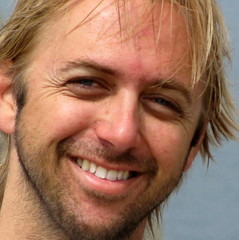 Alex Backer
Alex Backer
Ph.D. Founder and CEO, ab|inventio Why We Age, How Aging is Good For You, How to Live Two Years Longer Using Your Cell Phone & BeyondAlex's talk will be divided in three parts. The first will explain the selective advantage of aging, or why biology evolved a genetic program to age. The second will teach you how to live two years longer using your cell phone. The third will make a specific proposal to extend lifespan: that of redundant organs with failover systems with real-time wireless sensing devices for monitoring, repair and replacement.

-
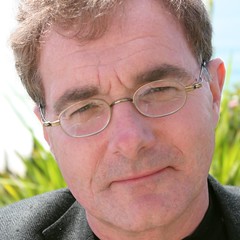 Ronald Bailey
Ronald Bailey
The Democratic Threat to TranshumanismDo you think your neighbors should get to vote on whom you marry? Whether you should be able to use contraception? Likely not. So why should people get to vote on whether you can increase your healthy lifespan using transformative technologies? For example, using human embryonic stem cell lines to cure your illnesses? And why should balloting limit your access to new reprogenetic technologies? Unfortunately, contemporary history shows that majorities in modern democracies are only too happy to ban technologies (e.g., stem cells, cloning, PGD) that are the precursors to transhuman progress. As philosopher Jurgen Habermas noted, for modern liberals “human rights enjoy normative priority over democracy, and the constitutional separation of powers has priority over the will of the democratic legislature.” As a minority preference (at least for now) tranhumanists must argue for liberty and oppose democratic authoritarianism. When people of good will deeply disagree on moral issues that don't involve the prevention of force or fraud, it is a fraught exercise to submit their disagreement to a panel of political appointees or a democratic vote. That way leads to intolerance, repression, and social conflict.

-
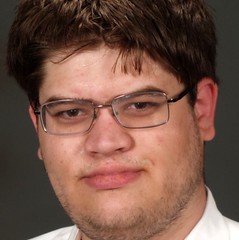 Bryan Bishop
Bryan Bishop
Do-it-yourself Transhuman TechThis talk will cover the prospects of do-it-yourself transhumanism, do-it-yourself garage biotech and engineering. These topics and more will be explored within the context of open source technology and licensing. In addition, progress on open source DIY lab-on-a-chip devices will be exhibited.

-
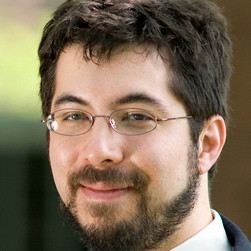 Ed Boyden
Ed Boyden
Assistant Professor, MIT Media Lab Controlling Brain Circuits with LightThe brain is three-dimensional and densely-wired with billions of heterogeneous computational primitives. Understanding how these elements work in real time to mediate behavior and consciousness, and how they are compromised in neural pathology, is a top priority. We have recently revealed methods for real-time optical activation and silencing of specific cell types in the brain, using naturally-occurring molecular sensitizers such as channelrhodopsin-2, halorhodopsin, and archaerhodopsin. Building off of these molecular tools, we also have created optical hardware and algorithms for systematically testing the contribution of brain regions, cell types, and circuit connections to behavioral functions. We are also working on noninvasive methods of information delivery to the brain. We discuss the application of these technologies to the analysis of neural dynamics, as well as to translation for new treatments for human disease, and eventually towards augmentation of the human condition.

-
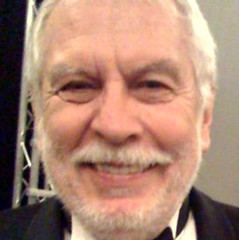 Nolan Bushnell
Nolan Bushnell
Chairman and Founder of Snap Education 50 years of Invention and Entrepreneurship: A Retrospective and Introduction of the NextThe products and services of my life from simple gadgets as a teen to the more sophisticated projects of an adult continue to stoke the creative fires of invention and discovery. My processes of research and execution on a project have been a significant part of successful business formation. In any business many unforeseen occurrences can disrupt any carefully crafted business plan. The objective is to minimize those instances to as few as possible so that it is unlikely to be battling more than one at a time. I will talk about my process of invention and business formation and how it applies to my various companies.

-
 Darlene Cavalier
Darlene Cavalier
Citizen Scientists: Disrupting Science... In a Good Way!The field of citizen science is experiencing an unprecedented boom in popularity. Impressive numbers of people are inclined to “get their hands dirty” with science, either through recreational activities or full-fledged research projects. To take just a few examples, in the U.S. alone there are 48 million birders, half a million amateur astronomers, and another half a million volunteers who monitor the quality of our waterways. A few years ago when a citizen science project known as “Galaxy Zoo” put out a call for volunteers to analyze telescopic images online, nearly 150,000 people signed up. Not to mention the 90 million Americans who like to work on do-it-yourself projects and the newly christened “Generation Jones,” that sizable hunk of Baby Boomers who yearn to participate and be active.

-
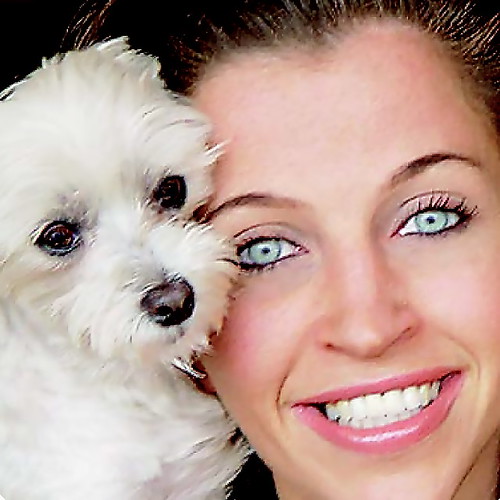 Wendy Diamond
Wendy Diamond
The Future of PetsIn 1999, when 12 million animals were put to sleep in shelters, Wendy Diamond launched the premier lifestyle media company for animal lovers to support endangered animal advocacy and animal rescue. Today the amount of animals put to sleep is down to 5 million and the amount spent on pets is now over 46 billion dollars annually. In the Future of Pets, Wendy Diamond will discuss that 46 billion dollar number and how it is exponentially growing this century. Diamond predicts that the pet will truly become a part of the family as more people become aware of how positive pets are for our health and lifestyle. In addition, she will discuss "pet obsession" and how she predicted and created the market in celebrity pets, which too will continue to grow, helping to promote pets as part of our society.

-
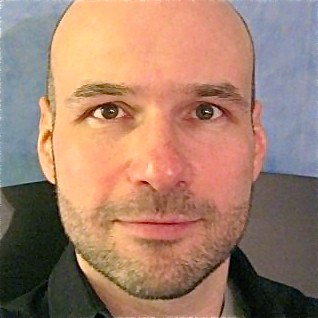 George Dvorsky
George Dvorsky
Board of Directors, Institute for Ethics and Emerging Technologies When the Turing Test is not enough: Towards a functionalist determination of personhood and the advent of an authentic machine ethicsEmpirical research that works to identify those characteristics requisite for the identification of nonhuman persons are proving increasingly insufficient, particularly as neuroscientists further refine functionalist models of cognition. To say that an agent "appears" to have awareness or intelligence is inadequate. Rather, what is required is the discovery and understanding of those processes in the brain that are responsible for capacities such as self-awareness, empathy and emotion. Subsequently, the shift to a neurobiological basis for personhood will have implications for those hoping to develop self-aware artificial intelligence and brain emulations. The Turing Test alone cannot identify machine consciousness; instead, computer scientists will need to work off the functionalist model and be mindful of those processes that produce awareness. Because the potential to do harm is significant, an effective and accountable machine ethics needs to be considered. Ultimately, it is our responsibility as citizen-scientists to develop a rigorous understanding of personhood so that we can identify and work with machine minds in the most compassionate and considerate manner possible.

-
 Alexandra Elbakyan
Alexandra Elbakyan
Brain-Computer Interfacing, Consciousness, and the Global Brain: Towards the Technological EnlightenmentBrain chips to increase intellectual capabilities, control machines using thought alone, or transfer information directly into the brain are quite popular in sci-fi and have been recently adopted as concrete research goals by many science and engineering teams around the world. Currently developed prototypes adopt a "black box" model - they do not allow the user to experience what is going on inside the implant. Our brain, on the contrary, is open to us - it doesn't only process sensory input and calculate appropriate behaviors based on it, but also enables us to experience what is happening. In other words, brain activity is accompanied by consciousness. Potentially, brain chips can also be designed to have consciousness inside them. Inserted into a human brain, such a conscious implant would expand the user's conscious experience with its own contents. For this, however, a new kind of brain-machine interface should be developed that would merge consciousness in two separate systems - the chip and the brain - into single, unified one.
Many technologies could be applied in this direction, for example the genetic engineering of special neurons designed to interface between ordinary neurons and electronic devices. Progress in conscious interfaces could eventually allow us to unify consciousness of different human beings, leading to the emergence of special kind of global brain, in which every individual will experience itself being a GB, and won't become just one of the cogs in this huge super-intelligent system.
-
 Ben Goertzel
Ben Goertzel
Vice Chairman, Humanity+ The Future History of Artificial General Intelligence: Cognitive Robotics and the Global Brain, 2010-2040After a brief survey of the state of the art in AGI, cognitive robotics and distributed Internet intelligence, we will extrapolate current technology directions forward, and look at some of the more plausible and interesting future possibilities. Special attention will be paid to the scenario in which global brain technology helps provide both background knowledge, collective hybrid human/digital computing power and human-friendly goal content for non-human-like, self-improving AGI systems.

-
 Noah Goodman
Noah Goodman
MIT, Dept. of Brain and Cognitive Sciences (Reverse) Engineering Intelligence: Logic, Statistics, and Flexible ThoughtWhat computational principles explain the success of human intelligence? I will describe recent work that combines together the unbounded flexibility of mathematical logic with the robustness of statistical inference. This combination brings us several steps closer to understanding human intelligence -- and to the tools for true intelligence engineering.

-
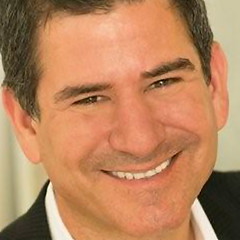 Tony Greenberg
Tony Greenberg
Chairman, Ramprate Building a Services Market for the Transhuman EraInnovation, including transhumanist innovation, is mostly the domain of private enterprise, which operates in one of a few market models – goods or services, mass-market or custom, consumer or enterprise, etc. Of these, the services model is the one that is most broken. Of Consumerist's 32 Worst Companies in America, 22 are pure-play services companies – including 7 of the 8 finalists, and the eventual winner, Comcast.
The big question is: how do we get further along the transhumanist path when so much of it – uploading, virtual reality, cryonics, and likely even consumer-accessible versions of nanotechnology – are, or will be, delivered as a service? How do we find and reward the companies that won't accidentally unfreeze you after a power outage, lose your backup self, or jerk you out of paradise over a phony billing dispute when none of those things appear in the glossy brochure or the snazzy website? How can we tell the genuine article from marketing hype when our very selves depend on it?

-
 M. A. Greenstein
M. A. Greenstein
CEO, The George Greenstein Institute Sparking our Neural Humanity with Neurotech!Sparking and recording the growth of neural networks from consistent, mindful interoception or S.I.T. practices has spawned convincing evidence and a new neurotech industry positioned to change the course of human evolution. Dr. G. will discuss one of the agents and motifs of the sparking phenomenon and point to future paths for neurotech researchers and investors to take.

-
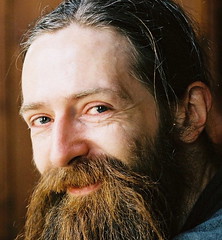 Aubrey de Grey
Aubrey de Grey
SENS Foundation Hype and Anti-Hype in Academic Biogerontology Research: A Call to ActionAn essential prerequisite to the efficient discovery of solutions to daunting technological challenges is objectivity about the plausibility of particular approaches, which is in turn founded upon objectivity concerning what is already known and/or possible. In the case of combating aging, prominent academics have been appropriately forthright in highlighting the lack of objectivity in the descriptions of various of the alleged anti-aging therapies that are currently available that are provided by those who sell such therapies. In some cases, however, these biogerontolgists have overstated the case and made over-pessimistic criticisms of such products, which not only limits our ability to defend against aging today but also undermines the reputation of academia by appearing to be based on vested interests. Similar problems apply to the overstated and premature rejection of proposals for future therapies that are based on work not traditionally the preserve of biogerontology, such as regenerative medicine. These flaws are further exacerbated by the willingness of many high-profile biogerontologists to collude with the media in the over-optimistic presentation of the significance of advances that do fall within the traditional scope of biogerontology. While such manipulation may be forgiven as a natural response to the critical shortage of funding in research, it nevertheless delays progress in developing truly effective anti-aging therapies by distorting the view of the general public and of policy-makers concerning what is and is not a promising way forward. In my talk I will address all the above issues and discuss how we might alleviate them.

-
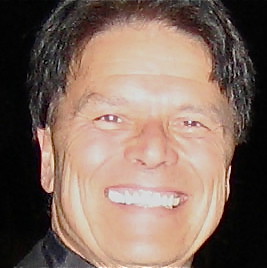 Christopher Harz
Christopher Harz
Serious Games: Videogames for Changing the World and Lifelong LearningEveryone is aware of the growth of entertainment videogames, a global market in excess of $50 billion. Relatively few people outside of the profession are aware of Serious Games, videogames used for non-entertainment purposes, including education and training (for physicians, law enforcement, military, first responders, lawyers, K12 and universities, business teams, musicians, and so on), physical exercise, meditation, communicating with other cultures, designing virtual movie sets and buildings, therapy for serious illness (including PTSD), and a host of other applications.
Serious Games can stimulate your creative processes, help your organization collaborate with remote teams, or enable learning topics such as science and math more effectively than by traditional textbooks. The field is growing rapidly, and offers many job opportunities for both young and old for a range of talents, including teaching, art, programming, design, game technology, animation, audio, and—especially—the field needs “agents,” advanced thinkers who can bridge different organizations and help bring them together as meta-communities.

-
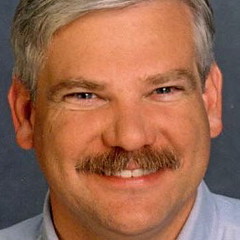 Mark Hatch
Mark Hatch
CEO, TechShop Boom! Making a Creative RevolutionRecent advances and the rise of extreme making is driving the next industrial revolution and improving our world.
We are living at the start of the greatest explosion of innovation the world has ever seen. Take the renaissance (knowledge explosion), Gutenberg (cheap information), the enlightenment (self-determination), the industrial revolution (capital and tools), and information revolutions (the delivery of free knowledge and information), then mix and ignite. BOOM! You get the Creative Revolution.
I will highlight how “Free, Cheap and Disposable” is changing the cost to innovate, I’ll explore some of the implications and, in the “Show and Tell” portion, highlight the early accomplishments of some Extreme Makers.
-
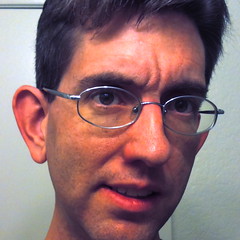 Kenneth J. Hayworth
Kenneth J. Hayworth
Can we extract a mind from a plastic-embedded brain?We now have a good working theory of consciousness – the phenomenal self model (Metzinger 2009), and we have a good understanding of the human cognitive architecture (Anderson 2007) within which this self model is implemented. The key components of this cognitive architecture are declarative memory chunks and productions – thought to be implemented as stable attractors in the neural networks of the cortex and basal ganglia. According to neural network theory, such stable attractors are robustly defined by the synaptic connectivity between neurons. In small pieces of tissue such synaptic connectivity is easily preserved using chemical fixation and embedding in plastic, and it should be relatively easy to adapt these protocols into a surgical procedure performed in hospitals to preserve whole human brains. Such plastic embedded brain tissue can be imaged at the nanometer level using new automated techniques (SBFSEM, FIBSEM, Tape-to-SEM), and we can directly extrapolate these techniques to future ones that will enable all the synaptic connections within a human brain to be mapped allowing a fully accurate simulation of the original preserved mind. In short, we have a complete sketch of how mind uploading will work and we have a mandate to implement emergency brain preservation in hospitals for all who desire access to this future technology.

-
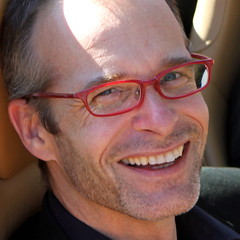 Andrew Hessel
Andrew Hessel
Co-Chair, Singularity University Altered Carbon: The Emerging Biological Diamond AgeCarbon is abundant, versatile, and the chemical foundation of all living creatures. Moreover, new forms of carbon are speeding advances in materials science, nanotechnology, and computing, with paradigm-busting ramifications. It is even poised to become the first truly global currency as industries transition away from carbon emitting processes to carbon-capturing ones in the expanding effort to stabilize our climate. And that’s just the beginning. Living creatures aren’t only made of carbon: they are versatile and efficient carbon processors. The ease by which life can be programmed to do our bidding opens the door to new, altered carbon forms no longer bounded by the need simply to survive long enough to replicate and pass on genes. The days of natural selection, then, are drawing to a close, to be replaced by an evolution Darwin never saw coming, one directed, for better or worse, by human enterprise, creative expression, or folly.

-
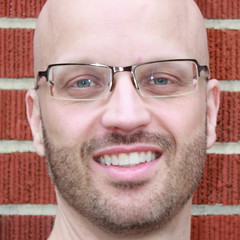 Patrick Hopkins
Patrick Hopkins
Professor of Philosophy at Millsaps College in Mississippi Why Uploading Will Not WorkTranshumanists tend to have a commitment to materialism and naturalism but nonetheless pursue goals traditionally associated with religious ideologies, such as the quest for immortality. Often, they hope to achieve immortality through the application of a technology whereby the brain is scanned and the person "uploaded" to a computer. This process is typically described as "transferring" one's mind to a computer. I argue that, while the technology may be feasible, uploading will not succeed because it in fact does not "transfer" a mind at all and will not preserve personal identity. Transhumanist hopes for such transfer ironically rely on treating the mind dualistically-and inconsistently with materialism-as the functional equivalent of a soul, as is evidenced by a carefully examination of the language used to describe and defend uploading. In this sense, transhumanist thought unwittingly contains remnants of dualistic and religious categories.

-
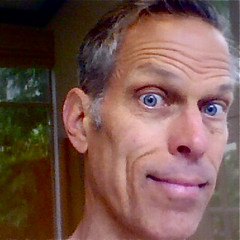 Hank Hyena
Hank Hyena
Global TransHumanism: An Analysis of the Top H+ Nations. Praising Their Achievements and Goals15 countries will be scrutinized in numerous categories: robotics, nanotech, green energy, e-democracy, citizen science, medicine, stem cell research, AI, economics, sci fi literature, philosophy, cryonics, life extension, human rights, space research, in-vitro meat, farmscrapers, architectural design, education. Predictions will be made. Lecture, followed by Q & A discussion.

-
 James Hughes
James Hughes
Institute for Ethics and Emerging Technologies The Problems of Transhumanism are Problems of the EnlightenmentTranshumanism is part of the family of Enlightenment philosophies. As such transhumanism has also inherited the internal tensions and contradictions of the broad Enlightenment tradition. From the beginning thinkers and movements have interpreted core Enlightenment values of reason, secularism, self-determination, progress, universalism and individualism in radically different ways. It is essential that transhumanists understand how our internal divisions and arguments are playing these three hundred year old debates so that we can avoid old mistakes and dead ends.

-
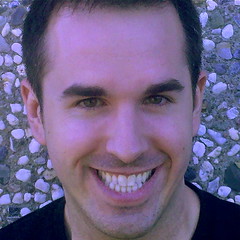 Joseph P. Jackson III
Joseph P. Jackson III
Enlightenment 2.0: Unleashing the Open Science and Open Source Innovation RevolutionsThe 21st century is off to a rocky start, and as economic and ecological crises converge, there is no shortage of dire predictions. On the other hand, politicians and pundits point to the expectation that Science and Technology will let humanity invent its way out of the problems we’ve created. This rosy outlook ignores a deep crisis that has been brewing and could hamstring our innovative capacity when we most urgently need it.
Despite nostalgic myths that Science is the realm of open inquiry, reasoned debate, and the pursuit of objective truth, it has always been politicized, though never to the dangerous degree attained just in the past decade. The viciousness of the fight over embryonic stem cell research, the conflict over creationism, and the politics of climate change are unprecedented new lows.
In the last ten years, a collection of burgeoning movements has begun the herculean task of overhauling the outmoded institutions and worldviews that make up our global scientific governance system. Imagine a vastly accelerated research, development, and commercialization cycle using an entire Open Innovation process from start to finish. In the best case scenario, a virtuous circle of mutually reinforcing shifts toward transparency and collaboration could unleash hitherto untapped reserves of human ingenuity.
-
 Kevin Jain
Kevin Jain
Transhumanism & EducationIn reviewing the curricula of various Universities, one will find few, if any, classes that meaningfully consider the increasing assimilation of technology with the human. If an education predicated on assumptions of human nature is made without a meaningful consideration of transhumanism, can it remain relevant in a future where technology may render false these very assumptions? How can the question of human enhancement be introduced as a topic of more widespread academic deliberation? This talk will also discuss current efforts in this arena.

-
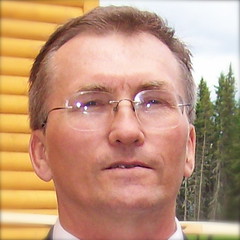 Morris Johnson
Morris Johnson
HACCP as a lifespan extension management systemHACCP , a comprehensive self-directed management system which is used to ensure food and pharmaceutical safety can be readily adapted to personalized healthspan and lifespan plan creation and implementation. Preventative, regenerative, enhancement, crisis-management and palliative medicine incorporated into the 12 step HACCP management system life-cycle can manage hazards which contribute to finite lifespan and reduced healthspan by managing 8 critical control domains. Hazard analysis of 6 management domains, including 8 moral hazard sub-domains can empower individuals to create their own personal longevity dividend. It is asserted that the profitability of statistically compliant mortality creates an economic incentive which undermines efforts to shift the global economic paradigm to one which encourages extreme healthspan and lifespan. Adaptation of universally accepted HACCP methodologies can drive transhumanism's fundamental principles and the concept of universally accessible extreme lifespan into mainstream acceptance.

-
 Heather Knight
Heather Knight
CTO, Humanity+ Why Robots Need to Spend More Time in the Limelight: People Tracking and Artificial PersonalityIn order to develop the personal robots of the future, it will be essential to develop systems of social intelligence for robots. An important factor is this transition will be to base robot intelligence on real human situations and scenarios, which requires us to immediately move user studies out of sterile laboratories and into the general public. To this end, I have created a company called Marilyn Monrobot, which is innovating charismatic machine performances. In one example, robot and human actors will perform the same script and basic set of actions, but each time vary the emotional and social content of those interactions. This variation will be based on realtime and post-processed audience data and will allow the general public to craft and home robot personalities. The ultimate goal is a system that allows for both planned and impromptu performances, and a natural extension of the work would be to take down the so-called 'third wall' of the stage and bring the human-robot performances directly into a mass of people, much like spoken word in a city crowd.

-
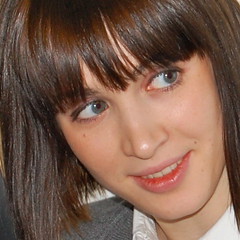 Maria Konovalenko
Maria Konovalenko
Science for Life Extension Foundation Regenerative Medicine Roadmap: Guidelines for ScienceRegenerative medicine is now one of the few rapidly developing fields that have a great potential in significantly improving the quality of life and promoting longevity. It is highly important to create a roadmap for the whole field in order to enable effective collaboration among the researchers and to multiply the future outcomes of their work.
The purpose of this chart is to create an overview of the field from the scientific point of view and to list the current and future research directions in each area. The goal is to create a draft of the scientific part of the Regenerative Medicine Roadmap, which would set the guidelines for the scientists, provide research plans for the institutions and help attract potential sponsors and investors.
Regenerative Medicine is divided into 5 blocks: Tissue engineering, Cell therapy, Diagnostic platforms, Healing therapies and Supporting Technologies. The main focus of the chart lies on the Tissue Engineering and Cell Therapy parts. These parts are schematically divided into components, which in their turn are described in more detail with specific research directions. Tissue engineering comprises such areas as methods, cells for use, biomaterials, database creation. The Cell Therapy part consists of three blocks, cell removal, regenerative capacity restoration and adding cells. Specific research directions listed provide the ground for forming research plans in each particular area. This preliminary work will help create a highly detailed plan of actions in regenerative medicine.

-
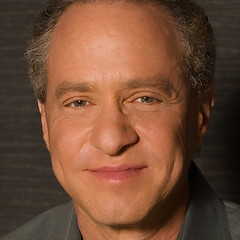 Ray Kurzweil
Ray Kurzweil
Founder, Kurzweil Technologies The Power of Hierarchical ThinkingWhat does it mean to understand the brain? Where are we on the roadmap to this goal? What are the effective routes to progress - detailed modeling, theoretical effort, improvement of imaging and computational technologies? What predictions can we make? What are the consequences of materialization of such predictions - social, ethical? Kurzweil will address these questions and examine some of the most common criticisms of the exponential growth of information technology including criticisms from hardware ("Moore's Law will not go on forever"), software ("software is stuck in the mud"), the brain ("the brain is too complicated to understand or replicate"), ontology ("software is not capable of thinking or of consciousness"), and promise versus peril ("biotechnology, nanotechnology, and artificial intelligence are too dangerous").
There is now a grand project comprising at least a hundred thousand scientists and engineers working in diverse ways to understand the best example we have of an intelligent process: the human brain. It is arguably the most important project in the history of the human-machine civilization. The goal of the project is to understand precisely how the human brain works, and then to use these revealed algorithms as a basis for creating even more intelligent machines.
As we learn the algorithms underlying human intelligence, we will similarly be able to engineer it to vastly extend the powers of our intelligence. Indeed this process is already well under way. There are literally hundreds of tasks and activities that used to be the sole province of human intelligence that can now be conducted by computers usually with greater precision and vastly greater scale.
-
 Andrea Kuszewski
Andrea Kuszewski
Intellectual Enhancement: Maximizing Your Cognitive PotentialIs it possible to raise your level of intelligence merely by changing your manner of thinking? Increasing neural plasticity, or establishing new neural connections, by forcing your brain to engage in novel activities and adapt to environments outside of its comfort zone, may be the key to proving false the old assumption that intelligence is fixed at birth. If the complete construct of intelligence has a metamorphic quality, and we have the ability to enhance both neural plasticity and synaptic plasticity, the question then becomes: How can we engage our brain in order to maximize our cognitive growth?

-
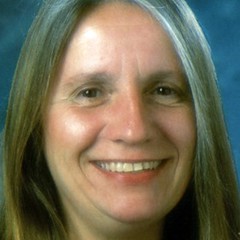 JoAnn Kuchera-Morin
JoAnn Kuchera-Morin
Director, Allosphere Research Laboratory Composing in N-DimensionsWhat if one could compose and perform complex N-dimensional data as a composer composes and performs a piece of music? Could intuitive control of complex quantum information lead to an elevated level of consciousness? A team of artists, scientists and engineers have been working together for a number of years and have found a way to intuitively control this information using one of the largest scientific and artistic instruments in the world, the AlloSphere.

-
 Jeff Lieberman
Jeff Lieberman
Time Warp, MIT Media Lab A New Kind of Citizen: Where We Haven't LookedLieberman covers education reform in the context of introspective neuroscience. He explores solutions for the future that look inward to move forward instead of thinking that only external solutions are going to solve problems. Innovation is not just about new technologies, it is about technologies we've had and not taken advantage of for hundreds (or more) years.
As he highlights in his concept description for Time Warp, the high-speed photography show he currently hosts, "We can use technology to allow us to see the world in ways we never before dreamed, to transcend the limits of the human body, to show us beauty we didn't know existed." In this talk, this same concept is extended to apply to technologies and techniques both old and new.
-
 Amy Li
Amy Li
Executive Director, Humanity+ UX Rocks: How to be a Citizen Scientist and Convert Research Technology to Awesome Usable ProductsAdvancement in mobile, ubiquitous, social, and tangible computing technologies have moved human computer interaction (HCI) into practically all areas of human activity. This has led to a shift away from usability engineering to a much richer scope of user experience, where user's feelings, motivations, and values are given as much, if not more, attention than efficiency, effectiveness and basic subjective satisfaction.
How to be a citizen scientist, and convert your research technology to awesome usable products? What are the human factors to consider? What makes a design seem intuitive? Whether you are designing a robot, an iPhone application, a novice medical device, or other wonderful technology innovations, with the right philosophy and methodology, your job will be much easier, and your users will be much happier.

-
 Alex Lightman
Alex Lightman
Executive Director, Humanity+ The Rise of Citizen-Scientists in the Eversmarter WorldKnowledge may be expanding exponentially, but the current rate of civilizational learning and institutional upgrading is still far too slow in the century of peak oil, peak uranium, and "peak everything". Humanity needs to gather vastly more data as part of ever larger and more widespread scientific experiments, and make science and technology flourish in streets, fields, and homes as well as in university and corporate laboratories. In this talk, H+ Executive Director Alex Lightman will give an introduction and overview of the big picture of H+ the organization, the magazine, and the conference, and how the participants can make the most of their experience and relationships at the conference. The case for ending embargoes and other beaver dams in the rivers of potentially global knowledge will be made. Lightman will offer a vision of a properly functioning Eversmarter world, ending with a call to action to become a citizen-scientist, and a recruiter of other citizen-scientists.

-
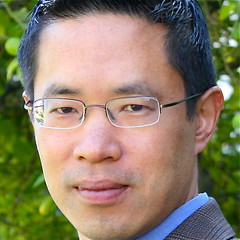 Patrick Lin
Patrick Lin
Director, Ethics+ Emerging Sciences Group Military 2.0: Ethical Issues in Human Enhancement and RoboticsFor better or worse, the military is a major driver of technological, world-changing innovations, such as the Internet. At the same time, wars and armed conflicts are a key roadblock in the evolution of humanity. Therefore, to understand how emerging technologies will change our lives, we must look at their military origins as a harbinger of things to come for society at large. This presentation will focus on ethical and policy questions arising from two key areas making headlines today and in the future: human enhancement technologies and robotics.
For instance, are there moral or practical issues with eliminating human emotions such as fear or anger, which have led to abuses and accidents in wartime? Must these enhancements (and others, such as super-strength) be temporary or reversible, considering that soldiers usually return to civilian life? Robots can discourage such abuses if equipped with cameras, becoming objective and unblinking observers on the battlefield, but would this erode cohesion and trust among soldiers – and in the civilian realm, would surveillance robots infringe on our privacy? Generally, would these new technologies make it easier to engage in war, since they would lower political costs by reducing the number of casualties on our side – if so, is it immoral, or otherwise counterproductive to humanity's progress, to develop these capabilities?
-
 Seth Lloyd
Seth Lloyd
Director, WM Keck Center for Extreme Quantum Information Theory Professor, MIT The Democracy of KnowledgeScience is an intrinsically democratic form of knowledge: it consists of facts, ideas, and experiments that can in principle be verified by anyone, regardless of country, creed, color, or, for that matter humanity --- a scientific result can be verified by an alien, a computer, or an intelligent rat. Moreover, because it is funded largely by public monies, Science has a unique responsibility to the pubic. This talk discusses the implications of the democratic nature of Science. Two of my current projects, the physics of time travel, and the quantum mechanics of life, are used as examples of what scientific inquiry can and cannot accomplish.

-

-
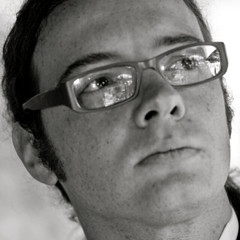 Timothy Marzullo
Timothy Marzullo
Backyard Brains: Neuroscience for Everyone!Is your electrophysiology burning a hole in your pocket? Did you have to wait until graduate school to actually study the brain? That's so sad! But, have no fear, Backyard Brains presents the open-source SpikerBox, allowing you to hear and record brain signals of insects for less than $100. No Ph.D. required!
Cockroaches or Crickets, we don't discriminate. We'll also present a few exciting new prototypes...from DIYBio to DIYNeuro.
Backyard Brains: Because the Brain is not magic.
Added bonus: Are you a P.I. or department head of a neuroscience group? Are you tiring of all the students banging down your door who say they want to study the brain? Don't worry! Hand them a SpikerBox and see if they come back. If they do, they're golden! If not, it was never meant to be! We just saved you years of H.R. issues.
-
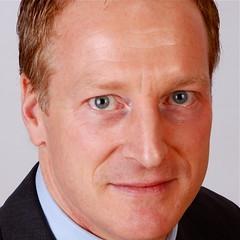 Pieter J. Mosterman
Pieter J. Mosterman
Computation of Things: Challenges and Solutions for the Needs of HumanityThe current exponential growth of technologies is providing novel, frequently unimaginable ways of leveraging its applications for human needs. Ubiquitous communication capabilities allow a redefinition of an individual person as one who is becoming an integrated part of the virtual world and vice versa. The challenge of sustainable development of those trends from the perspective of a single human and humanity as such remains unsolved.
In the presented vision various aspects of the sustainability (e.g., the relation between a person’s quality of life, climate change, and social awareness) are highlighted to explore and share how an individual impacts and is impacted by the surrounding. Ultimately a technological solution called Computation of Things (CoTh) is outlined. It allows for a quick and reliable assessment of people’s possible decision paths and how this affects sustainable development on a local and global scale. Forecasting life-path alternatives for a human based on its geographic position (including pollution level, energy usage), activity patterns (including nutrition habits, lifestyle, travelling load, family status, circle of friends, social network, or virtual life), and state patterns (including individual’s DNA, current health conditions, musculature) is targeted.
-
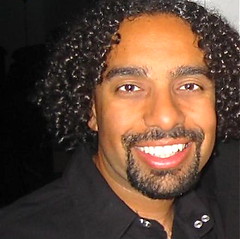 Ramez Naam
Ramez Naam
Humanity 2020: The Next 10 Years of Human DevelopmentThe decade between 2010 and 2020 will be a small but significant step in the development of human enhancement technology, with tremendous numbers of new discoveries in genetics fueled by the continuing exponential drop in gene sequencing cost, commercial availability of a new generation of cognitive enhancers and the first plausible aging inhibitors, likely advances in genetic reprogramming of embryos and of mature humans, and continued progress in prosthetics, imaging, sports enhancement, and numerous other areas. Science and technology will have made significant strides in empowering individuals to be smarter, stronger, faster, and longer lived than ever before.

-
 David Orban
David Orban
Chairman, Humanity+ Intelligence Augmentation, Decision Power, and the Emerging Data SphereHuman civilization depends on our ability to manage its increasing complexity. Behaviors, processes, and decisions that in the past were tolerated by the complex adaptive system we call Earth, are now more and more showing unforeseen consequences in unexpected places.
Many of our theories about the workings of the world are hampered in their predictive power by the lack of data, and suffer garbage-in, garbage-out effects. New interconnected sensor networks, fast, and ubiquitous communications, and the parallel power of our massive software systems are the never too soon answer to this need, and promise to revolutionize the way we understand, and act upon the planet.
The data sphere we are building, developing through every traceable action of millions of people, and billions, soon trillions of devices, designs a fine-grained picture of necessary understanding, and empowers us to believe that we can indeed aim to evolve our civilization, and to move it to the next levels of complexity, and achievement of human potential.
-
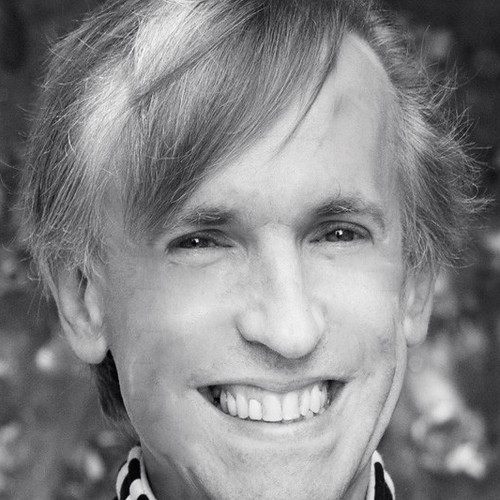 David Pearce
David Pearce
The Fate of the Meat WorldSome transhumanists speculate about a future of post-biological superintelligence, and even "uploading" ourselves to a less perishable medium. This involves some fairly radical metaphysical assumptions. Viable or otherwise, universal "destructive" uploading is sociologically implausible to say the least. So what will be the fate of old-fashioned organic robots in the primordial biosphere? This talk explores a more bioconservative scenario - a future of superintelligent, supersentient and superhappy organic life in a cruelty-free global ecosystem. What are the pitfalls and opportunities of using biotechnology to abolish suffering throughout the living world?

-
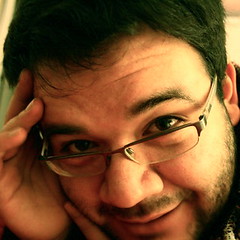 Arturo Pelayo
Arturo Pelayo
We are Ocean. Who will you be?At the heart of Humanity lie concepts such as curiosity, imagination, resourcefulness and a natural gravitation towards community building and governance.
Life, including human life, originated from the ocean. It is perhaps wise that this is where we have to return to find the path to our future.
At Ocean University we are planning a global expedition in a transformed passenger cruise ship that will serve as a tabula rasa for the exploration of what our common humanity is. In this dedicated neutral space, our quest doesn't begin by looking to the next trend or technological advance: Ocean sets the stage for human exploration in an expedition that will circumnavigate the globe exploring basic needs of the peoples of this planet.
Gaining a basic, first-hand understanding of humanity will open the possibility for program participants to begin conversations, collaborating and co-designing solutions for climate change, biodiversity, human mobility and intercultural communications. Ocean is a design collaborative at sea. Let's explore together the human diaspora.
-
 Millie Ray
Millie Ray
Harvard Medical School, Mass General Hospital Breakthrough Stem Cell ResearchHave you ever wondered just what a stem cell really is? Or why your tax dollars fund stem cell research? Can stem cells cure a disease? Do we have the technology to clone ourselves? The rapidly growing field of stem cell biology holds the promise of enormous benefits for medicine and science, and is a platform for capital gains as well as many legal and ethical issues. This talk will address these questions and offer a viewpoint on how recent advents in stem cell biology will affect the future of stem cell research and medicine.

-
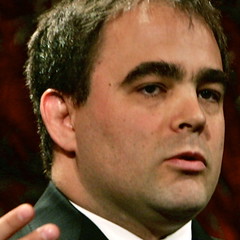 Geordie Rose
Geordie Rose
D-Wave Research Inc. Special purpose superconducting quantum processors for disruptively accelerating machine learningAny system that could be considered intelligent must be able to learn. Unfortunately teaching machines how to learn in a generalizable way – so-called minimally supervised or unsupervised learning – is an extremely hard problem. While much progress has been made in understanding how we might do this – for example using deep belief networks – all current proposals are extremely computationally intensive. Exercising them in real-world situations is often not possible because of the required computational cost – even for large corporations with access to enormous server farms. Here I present a path to overcoming this problem by running state of the art machine learning algorithms on a revolutionary new processor design, which uses quantum effects to enable a class of algorithms that cannot be run on any conventional processor.

-
 Heather Schlegel
Heather Schlegel
VP of Product Management, Debtmarket How WE create I: Post-Human Identity, Privacy and Self-ValueScience and technology let you to create the person you want to be. How does the technology we create today enable future selves? What is the impact on identity creation, individual privacy and self-value?

-
 Jessica Scorpio
Jessica Scorpio
Co-Founder, Gettaround Inc. Smart Transportation, A Human RevolutionToday, our transportation infrastructure is ridden with problems: accidents, traffic jams, limited parking and a profound negative impact on the environment. We live in a world of dumb transportation that is one of our largest wasters of GDP. While the light at the end of the tunnel may be autonomous cars, we are already on the path to redesigning the human condition to achieve smart transportation. In the face of challenges like limited resources: people historically overcome these hurdles by sharing. Examples of this trend include file sharing, ride sharing and time sharing.
We are in the midst of a technological revolution that could very quickly bring millions of existing vehicles online. People are carrying around mini-computers in their pockets and some of humanities greatest challenges can be overcome by leveraging this technology. Long before new models of vehicles come off the assembly line smart, we can leverage the power of smart phones and their real-time communication abilities that increases human intelligence to make cars more accessible and transportation more intelligent.
-
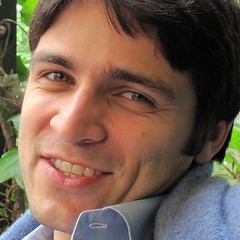 Mikhail G. Shapiro
Mikhail G. Shapiro
Third Rock Ventures Stepping Stones: Commercial Clinical Applications of NeurotechnologyA long-term term dream of popular neuroscience is to enhance and augment human cognitive abilities through the use of brain interfaces. While this vision is important in sparking the efforts of scientists and engineers to develop technological breakthroughs and reach a deeper understanding of the brain’s function, these goals may sometimes be too long-term to drive sustained activity and funding. To be successful, it may therefore be important to pursue “stepping stone” applications of brain interface technology in research and clinical medicine.
In my talk – drawing on a scientific and business perspective - I will discuss areas of medicine where concrete near-term opportunities may exist to make a difference for patients, and the types of emerging neurotechnologies that might lead to successful commercial ventures with the long-term prospects of developing human-enhancing products. I will also discuss the challenges entrepreneurial companies face in pursuing clinical applications of advanced technology and potential models for success.
-
 Lauren Silbert
Lauren Silbert
Princeton Neuroscience Institute Do we click? Speaker-Listener Neural Coupling Underlies Successful CommunicationVerbal communication enables us to directly convey information across brains, independent of the actual external state of affairs (e.g. telling a story of past events). Such phenomenon may be reflected in the ability of the speaker to directly induce similar brain patterns in another individual, via speech, in the absence of any other stimulation. The recording of the neural responses from both the speaker brain and the listener brain opens a new window into the neural basis of interpersonal communication, and may be used to assess verbal and non-verbal forms of interaction in both human and other model systems. Further understanding of the neural processes that facilitate neural coupling across interlocutors may shed light on the mechanisms by which our brains interact and bind to form societies.
The capacity to communicate internal thoughts from one person to another is at the foundation of human society. Communication naturally requires an interaction between at least two people. Existing neurolinguistic studies are concerned, however, either with speech production or with the comprehension of isolated words or sentences. Little is known, therefore, about the underlying neuronal mechanism that facilitates the transfer of information between two brains during communication.
-
 John Smart
John Smart
Co-Founder, Brain Preservation Foundation The Brain Preservation Prize: Why Inexpensively Preserving Our Brains After Death is a Good Thing for Ourselves and Society, And What You Can Do to HelpRoughly 150,000 unique and highly experienced human beings die every day, 55 million every year—a staggering loss of diversity and complexity for our planet. While modern medical science has barely begun to make progress in preventing biological death, we have learned in recent decades how to easily and cheaply preserve the brain structures that encode our unique memories and personalities using plastination, or chemical fixation and embedding in plastic for long-term storage. Very recently, we have also learned how to verify that these unique structures have been successfully preserved. Due to its low cost (likely much less than a casket burial) and validation ability, brain (or body) plastination may become an option for anyone who would choose to exercise it in coming years.
There are a wide range of reasons and motivations for preserving our brains, the essence of our unique, individual experiences and identities. Some may do it for science (an anatomic gift to the ‘human projectome’) or in pursuit of a more scientific, democratic, free, or secular society today. Some may desire not to be revived in the future as a conscious entity, but rather to leave their memories and experiences for their loved ones, as an extension of the digital memorials we see today. Some will desire to be consciously revived and have their patterns “uploaded” into a future robotic or virtual body or “reintegrated” into a future biological body. Some will leave such issues to future generations to decide.
-
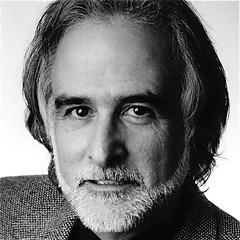 Michael Smolens
Michael Smolens
CEO, Founder, dotSUB Removing Language as a Barrier to Cross Cultural Communication Using the CrowdThe Tower of Babel has existed for thousands of years, preventing people and cultures, as they expanded across the oceans, to communicate their desires, fears, tell their stories, or get to know each other deeply and emotionally. This lack of understanding has been a major contributor to hatred, war, mass killings and a total lack of global co-operation to solve the ever more complex world issues.
As bandwidth penetration becomes ubiquitous, as its costs continue to decrease following Moore's law, and the costs and ease of use of shooting, editing, storing and distributing video move toward simple and free, video is rapidly becoming a new way of story telling and communicating. If a picture is worth a thousand words, what is a video worth?
This talk will address the important role of language across all areas of human and technology evolution as AI and crowd sourcing become pervasive is everything.
-
 Melanie Swan
Melanie Swan
Principal, MS Futures Group DIYgenomics Citizen ScienceMelanie Swan is a genomics researcher, hedge fund manager, and leader in the Health 2.0 movement. Recent publications include “Multigenic Condition Risk Assessment in Direct-to-Consumer Genomic Services,” “Engineering Life into Technology,” and “Emerging Patient-Driven Health Care Models.” She serves as an advisor to research foundations, government agencies, corporations, and startups. Melanie has an MBA from the Wharton School of the University of Pennsylvania and a BA from Georgetown University. She is an advisor and faculty member at Singularity University.

-
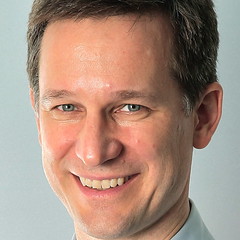 Robert Tercek
Robert Tercek
President, Digital Media, OWN: The Oprah Winfrey Network What Geeks Can Learn From Gurus: Lessons for Transhumanists from the Self Help ExpertWhat happens when radical change collides with mainstream culture? Is the citizen scientist movement prepared to deal with the reaction to transhumanism from media, government, religions, corporate interests and the general citizenry? Radical advances in bio-technology, materials science, AI and other disciplines will soon introduce changes on massive scale that will ripple through society for several decades. But the popular culture is only dimly aware of the implications of these changes today: later, when broader awareness occurs, it will trigger a massive reaction, including intense debate about ethics, morality, economics and equality . This talk will focus on some of the anticipated responses to advances in transhumanism. The speaker will identify proactive measures that the citizen scientist movement can adopt right now in order to be prepared for backlash, distortion, public outcry and political machinations. Lessons will be drawn from the example of experts from the self help industry who have successfully fostered a cultural movement that embraces significant life change as an positive aspirational ideal.

-
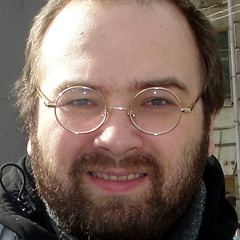 Alexei Turchin
Alexei Turchin
Expert of global catastrophes of Russian Transhumanist Movement Risks of SETI-programsThere are some not well known risks associated with the program of SETI—the Search for Extra-Terrestrial Intelligence. One of them is the scenario of possible vulnerability from downloading hostile AI with “virus-style” behavior. The proportion of dangerous ET-signals to harmless ones can be dangerously high because of selection effects and evolutionary pressure.

-
 Natasha Vita-More
Natasha Vita-More
Board Member, Humanity Plus Second-Order Enhancement Cybernetics: Brain, Body, Behavior & Social EcologyThis talk addresses the historical perspective of human enhancement as stemming from second-order cybernetics, Gregory Bateson, Heinz Von Forester and the Biological Computer Lab. The continued use of computer-based augmentation of human physiology has lead toward human-NBIC enhancement media, but is not limited to this quartet. The media also includes information technologies such as automation, robotics, AI, and simulation processes.
Included in this perspective is that the first area of concern for enhancement is that of logic: "We must restrict our focus on the zone where desire and feasibility intersect." (Stock 1992, 97)
I frame this sensibility as a second-order enhancement cybernetics, which includes social engineering and individual plasticity. Each person is an enhancement project as well as the observer of the project. Second-order cybernetics suggests that the observer is a necessary aspect of what is being observed; however, it does not assign a behavioral trait to the observer. Like cybernetics, there is a circular system in which feedback provides information which helps us adjust and adapt to change. Unlike cybernetics, the circular loop is spiraling rather than a closed system. This feedback helps us focus on the zone where desire and feasibility intersect and, further, toward develop long-range plans for a posthuman evolution. The relationship between the project, the observer, feedback, and adaptation is further influenced by a fourth attribute—what I introduce as an automorphic behavior within a social ecology.
-
 Stephen Wolfram
Stephen Wolfram
CEO, Wolfram Research, Inc. Computation and the Future of the Human ConditionHow far can technology ultimately go, and how will it redefine the human condition? This talk will be about bringing some surprising foundational discoveries about the basic science of the computational universe to bear on such questions. Along the way, I'll discuss the limits of science, medicine and technology, the nature of free will, the concept of meaning, the search for extraterrestrial intelligence, the notion of progress, and the future of human purpose---as well as a host of more immediate and concrete issue.

-
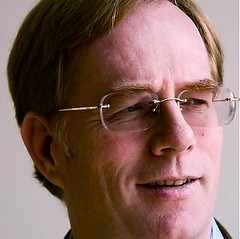 David Wood
David Wood
Principal, Delta Wisdom Far Beyond Smartphones: Lessons From Disruptive Technology, Open collaboration, and Breakthrough Mobile productsWhat factors cause both spurts and slowdowns in technology development? What enables new technology visions to "cross the chasm" towards mainstream adoption? Given the history of improvements in smart mobile devices over the last 20 years, what can we realistically expect in the next 20 years? How credible is the vision of mobile devices helping billions of people to collect data that can be used for science and advance human knowledge? To what extent can technological progress be foreseen, and to what extent is the process chaotic, risky, and even dangerous?

-
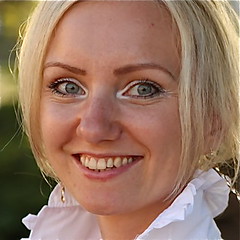 Justyna Zander
Justyna Zander
Harvard University Computation of Things: Challenges and Solutions for the Needs of HumanityThe current exponential growth of technologies is providing novel, frequently unimaginable ways of leveraging its applications for human needs. Ubiquitous communication capabilities allow a redefinition of an individual person as one who is becoming an integrated part of the virtual world and vice versa. The challenge of sustainable development of those trends from the perspective of a single human and humanity as such remains unsolved.
In the presented vision various aspects of the sustainability (e.g., the relation between a person’s quality of life, climate change, and social awareness) are highlighted to explore and share how an individual impacts and is impacted by the surrounding. Ultimately a technological solution called Computation of Things (CoTh) is outlined. It allows for a quick and reliable assessment of people’s possible decision paths and how this affects sustainable development on a local and global scale. Forecasting life-path alternatives for a human based on its geographic position (including pollution level, energy usage), activity patterns (including nutrition habits, lifestyle, travelling load, family status, circle of friends, social network, or virtual life), and state patterns (including individual’s DNA, current health conditions, musculature) is targeted.